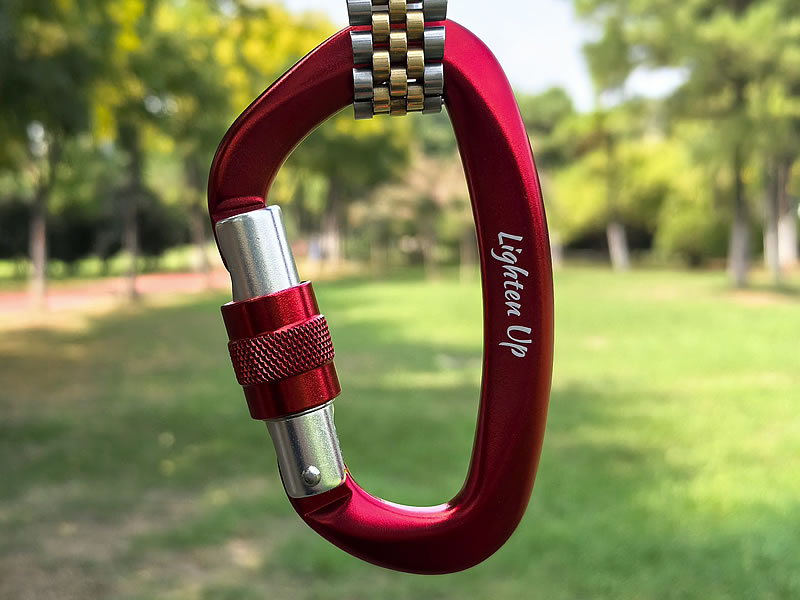How does a swivel carabiner reduce rope twist?
Rope twist plagues climbers on wandering routes, during rappels, or with double ropes—causing tangles, drag, and wasted energy. A swivel carabiner strategically mitigates this through intelligent engineering. Here’s the science behind its function and critical limitations.

The Problem: How Rope Twist Happens
- Rope Torque Generation:Lead Clipping: Rotating the rope to clip generates torsional force.Route Wander: Zigzagging paths force ropes into unnatural angles, accumulating twist.Rope Memory: Coiled ropes retain "memory," releasing twist during deployment.
- Static Carabiner Limitation:A fixed carabiner amplifies twist by anchoring rotational energy. The rope cannot spin freely, transmitting torsion up/down the line → causing kinks, hockles, and snags.
The Solution: Swivel Mechanics Explained
A swivel carabiner features a rotating barrel (inner sleeve) isolated from the main body via bearings or low-friction bushings. This design enables:
- Torque Isolation:When twisted rope enters the carabiner:The rope-clipped barrel rotates freely, dissipating rotational energy.The main body remains static, anchored to the quickdraw/anchor.Result: Twist localizes at the swivel instead of propagating.
- Friction Reduction:Swiveling minimizes surface contact between the rope and carabiner gate/body. Less friction = smoother rope flow + reduced drag.
Key Factors for Effective Twist Reduction
| Factor | Why It Matters |
|---|---|
| Placement | Only works on the rope-end of quickdraws or rappel devices. Bolt-end placement is useless. |
| Swivel Quality | High-end bearings (e.g., Petzl Am’D’s ball bearings) rotate smoother than basic bushings. |
| Cleanliness | Grit or corrosion seizes rotation → inspect and clean after sandy/muddy climbs. |
| Rope Type | Most effective for double/twin ropes or stiff single ropes prone to coiling. |
Limitations & Misconceptions
- ❌ "Swivels Eliminate Twist":They manage localized torsion but won’t fix systemic twist from poor rope handling.
- ❌ "All Swivels Are Equal":Cheap swivels with stiff rotation may worsen drag. UIAA-certified models (e.g., Black Diamond RockLock, DMM Shadow) ensure reliability.
- ⚠️ Maintenance Demands:Swivels fail if seized. Test rotation pre-climb: spin should be smooth under light finger pressure.
When Swivels Shine (and When They Don’t)
Optimal Use Cases:
- Trad/alpine routes with traversing protection
- Rappelling double ropes
- Sport climbs with severe zigzags (e.g., tufa mazes)Low-Value Scenarios:
- Straight vertical sport climbs
- Top-roping
- Static anchor points
Maximizing Swivel Efficiency: Pro Tips
- Pair with Anti-Twist Ropes: Use ropes with low torsional memory (e.g., Edelrid Swift Protect Dry).
- Flake Meticulously: Prevent pre-existing twists before leading/rapping.
- Combine with Long Draws: 24cm slings + rope-end swivel = ultimate wander-busting setup.
The Verdict
Swivel carabiners reduce rope twist by decoupling rotational force from the anchor point, allowing the rope segment at the carabiner to spin freely. This transforms torsional energy into harmless rotation rather than propagating kinks. However, their effectiveness hinges on correct placement, high-quality mechanics, and diligent maintenance. For climbers battling complex terrain, a certified swivel is an invaluable tool—but always prioritize fundamental rope management first.






